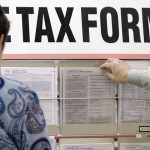Recently I was doing some research on the bankruptcy code and it’s controversial section 506, which deals with the deceptively simple concept of an “allowed secured claim,” but has in fact been the source of much bitter litigation in the consumer bankruptcy wars between debtors and creditors over the last twenty years.
My eye caught on the adjacent section, however: the seldom hear from bankruptcy code section 505, which concerns the “determination of a tax liabillity.”
Simply put, section 505 allows the bankruptcy court — and not the district court, tax court, or, heaven forfends, the IRS — to determine tax liabilities in bankruptcy cases. In other words, a bankruptcy judge can put a final figure on what a debtor owes in taxes, one that must be accepted by the tax authorities, subject only to appeal of the bankruptcy ruling.
This is actually a powerful weapon in a debtor’s arsenal, as tax liabilities are one of the most persistent troubles of people in financial difficulty. Most debtors may find litigation in the bankruptcy court a more favorable forum than tax court or a revenue agent’s office.
By Doug Beaton
